Read the original article on Business Insider.
A broken-down U.S. Air Force CV-22 Osprey has been stuck in a remote Arctic nature preserve for over a month, but Norwegian soldiers are making visible progress on getting it out.
The CV-22, a special-operations variant of the V-22 tilt-rotor aircraft, made a "controlled emergency landing" on the island of Senja in northern Norway's Stongodden nature preserve on August 12. The incident was caused by a clutch malfunction, and the aircraft has been stuck there ever since.
"It's just 80 meters or something from the water's edge, which is where we need to get it," Lt. Gen. Jim Slife, the head of U.S. Air Force Special Operations Command, said on Tuesday at the Air Force Association conference in National Harbor, Maryland.
But it's those 80 meters, which is just over 262 feet, "that are really challenging," Slife added.
Norway's military said on Tuesday that its Armed Forces Salvage Battalion has managed to move the $90 million aircraft a little over 50 feet, or roughly 15 meters — an impressive feat given it weighs over 33,000 pounds.

To do this, Norwegian army engineers built a makeshift path by stacking beams and wooden mats next to each other, making an improvised road from the Osprey to the shore. Closer to the water, engineers are building up the path by pouring gravel on top of the rocks.
Once soldiers move the Osprey — which had its fuel drained so that it's lighter and easier to transport — to the shore, the plan is to use a crane boat to lift it and then transport it to a NATO port in Norway for maintenance.
Once the aircraft is on the barge, "we're going to float it to an airfield where we can actually repair it," Slife said.
The entire operation is being done in communication with the U.S. Air Force and local environmental officials to ensure as little harm as possible to protected plants and animals in the preserve, Norway's military said.
Hoisting the Osprey onto the crane boat was supposed to happen earlier this week, according to the Norwegian military, but it was delayed by bad weather in western Norway. The military hopes to complete this step by Sunday. "The preparations are going as they should," Norway's military said on Tuesday.
Slife said on Tuesday that the improvised pathway was "nearly done" and that "in the next handful of days, probably inside the next week," personnel would would pull it to the water's edge and load it.
"But it's probably a week away from being off the island," Slife added.
The following military photos show how Norwegian soldiers have moved the aircraft closer to the water.
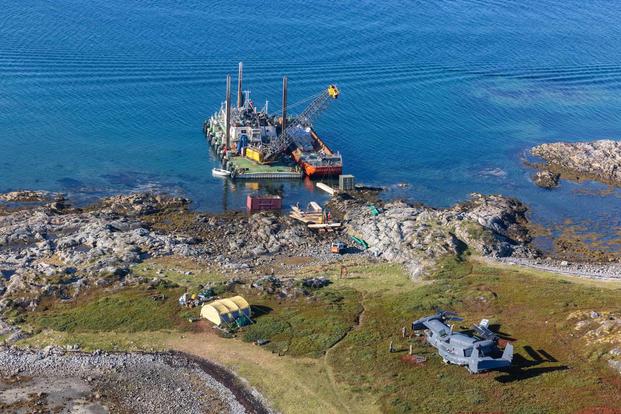
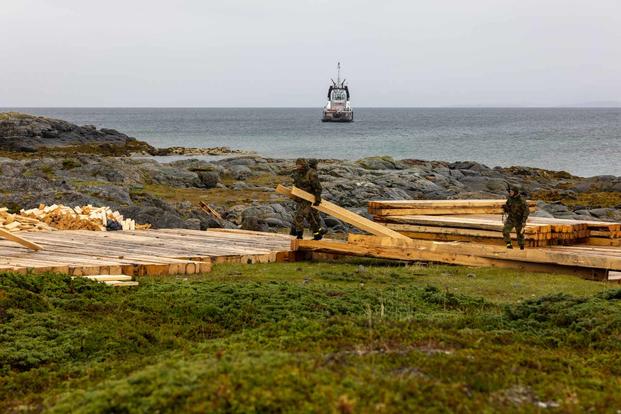
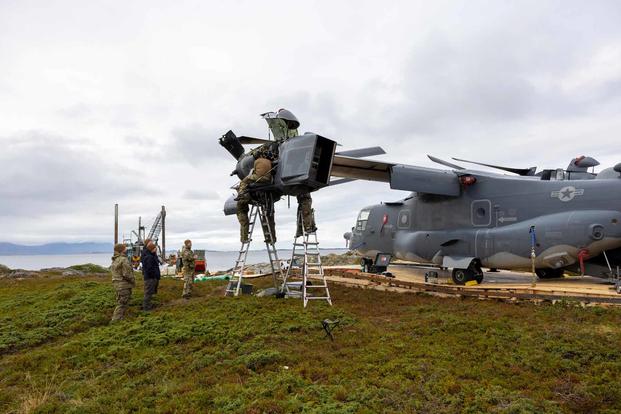
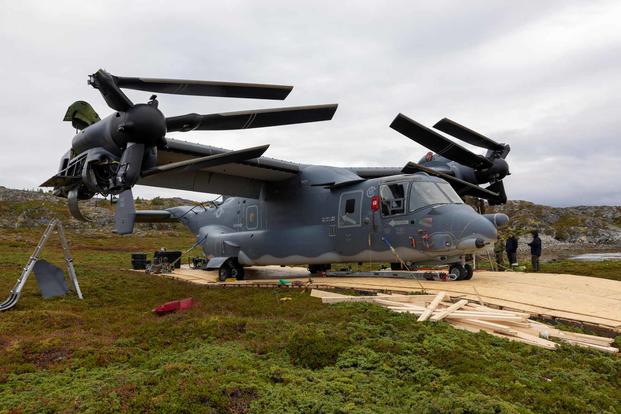
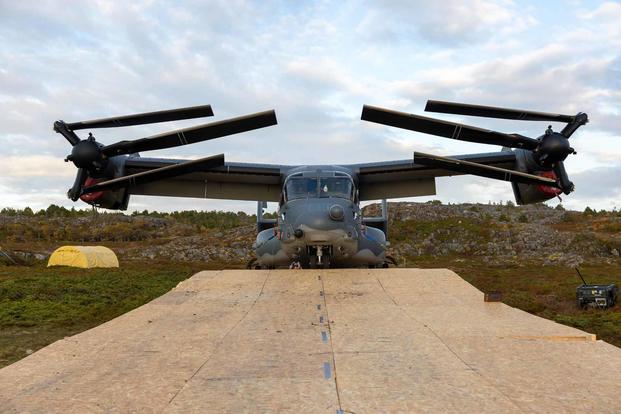
The clutch malfunction that grounded the aircraft is one of a handful of similar mechanical failures that led Air Force Special Operations Command to temporarily ground its Ospreys last month.
The slipping and reengaging of a clutch in the Osprey's engines causes what Slife has called "large transient torque spikes" that exceed what its engines and gearboxes can handle. There have been about 15 such incidents across the U.S. military's Osprey fleet over the past 12 years.
"These things never seem to happen at airfields," Slife said earlier in September. "They always seem to happen in Norwegian nature preserves above the Arctic Circle at the onset of winter."
Slife said the recovery provides "a really great tactical problem" for the unit involved, which has to "figure out what to do with that airplane out in the middle of a nature preserve with protected ferns and salamanders and things like that."











